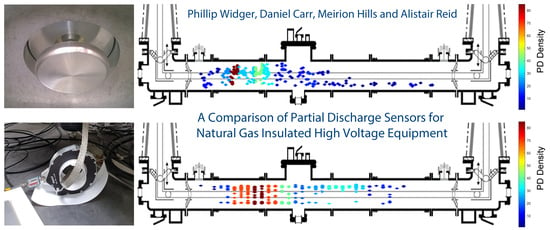A Comparison of Partial Discharge Sensors for Natural Gas Insulated High Voltage Equipment
Abstract
1. Introduction
2. Practical Test Arrangement and PD Sensors
3. Results
3.1. Partial Discharge Measurements
3.2. Results of Time of Flight Calculations
4. Discussion
5. Conclusions
Author Contributions
Funding
Acknowledgments
Conflicts of Interest
References
- Myhre, G.; Shindell, D.; Bréon, F.M.; Collins, W.; Fuglestvedt, J.; Jianping, H.; Koch, D.; Lamarque, J.F.; David, L.; Mendoza, B.; et al. Anthropogenic and Natural Radiative Forcing; Cambridge University Press: Cambridge, UK, 2013. [Google Scholar]
- Intergovernmental Panel on Climate Change (IPCC). Working Group I Contribution to Fourth Assessment Report of the Intergovernmental Panel on Climate Change; Cambridge University Press: Cambridge, UK, 2007. [Google Scholar]
- Widger, P.; Haddad, A. Evaluation of SF6 leakage from gas insulated equipment on electricity networks in Great Britain. Energies 2018, 11, 2037. [Google Scholar] [CrossRef]
- Li, Y.; Zhang, X.; Zhang, J.; Xiao, S.; Xie, B.; Chen, D.; Gao, Y.; Tang, J. Assessment on the toxicity and application risk of C4F7N: A new SF6 alternative gas. J. Hazard. Mater. 2019, 368, 653–660. [Google Scholar] [CrossRef] [PubMed]
- Beroual, A.; Haddad, A. Recent Advances in the Quest for a New Insulation Gas with a Low Impact on the Environment to Replace Sulphur Hexafluoride (SF6) Gas in High-Voltage Power Network Applications. Energies 2017, 10, 1216. [Google Scholar] [CrossRef]
- Rabie, M.; Franck, C.M. Assessment of Eco-friendly Gases for Electrical Insulation to Replace the Most Potent Industrial Greenhouse Gas SF6. Environ. Sci. Technol. 2018, 52, 369–380. [Google Scholar] [CrossRef] [PubMed]
- Zhang, X.; Li, Y.; Xiao, S.; Tang, J.; Tian, S.; Deng, Z. Decomposition Mechanism of C5F10O: An Environmentally Friendly Insulation Medium. Environ. Sci. Technol. 2017, 51, 10127–10136. [Google Scholar] [CrossRef] [PubMed]
- Widger, P.; Haddad, A.; Griffiths, H. Breakdown performance of vacuum circuit breakers using alternative CF3I-CO2 insulation gas mixture. IEEE Trans. Dielectr. Electr. Insul. 2016, 23, 14–21. [Google Scholar] [CrossRef]
- Widger, P.; Griffiths, H.; Haddad, A. Insulation strength of CF3I-CO2 gas mixtures as an alternative to SF6 in MV switch disconnectors. IEEE Trans. Dielectr. Electr. Insul. 2018, 25, 330–338. [Google Scholar] [CrossRef]
- Behrmann, G.; Wyss, K.; Weiss, J.; Schraudolph, M. Signal Delay Effects of Solid Dielectrics on Time-of-Flight Measurements in GIS. IEEE Trans. Dielectr. Electr. Insul. 2016, 23, 1275–1284. [Google Scholar] [CrossRef]
- Behrmann, G.; Franz, S.; Smajic, J.; Tanasic, Z.; Christen, R. UHF PD Signal Transmission in GIS: Effects of 90° Bends and an L-shaped CIGRE Step 1 Test Section. IEEE Trans. Dielectr. Electr. Insul. 2019, 26, 1293–1300. [Google Scholar] [CrossRef]
- Obrist, R.; Smajic, J.; Behrmann, G. Simulation Based Design of GIS Sensors for Partial Discharge Measurements. In Proceedings of the 17th Biennial Conference on Electromagnetic Field Computation (IEEE CEFC), Miami, FL, USA, 13–16 November 2016. [Google Scholar]
- Rodrigo-Mor, A.; Muñoz, F.A.; Castro-Heredia, L.C. A Novel Antenna for Partial Discharge Measurements in GIS Based on Magnetic Field Detection. Sensors 2019, 19, 858. [Google Scholar] [CrossRef] [PubMed]
- Rodrigo-Mor, A.; Muñoz, F.A.; Castro-Heredia, L.C. Principles of Charge Estimation Methods Using High-Frequency Current Transformer Sensors in Partial Discharge Measurements. Sensors 2020, 20, 2520. [Google Scholar] [CrossRef] [PubMed]
- Liang, R.; Wu, S.; Chi, P.; Peng, N.; Li, Y. Optimal Placement of UHF Sensors for Accurate Locaization of Partial Discharge Sources in GIS. Energies 2019, 12, 1173. [Google Scholar] [CrossRef]
- Wang, X.; Li, X.; Rong, M.; Xie, D.; Ding, D.; Wang, Z. UHF Signal Processing and Pattern Recognition of Partial Discharge in Gas-Insulated Switchgear Using Chromatic Methodology. Sensors 2017, 17, 177. [Google Scholar] [CrossRef] [PubMed]
- High-voltage Switchgear and Controlgear–Part 204: Rigid Gas-Insulated Transmission Lines for Rated Voltage above 52 kV. IEC/British Standard BS62271-204. 2011. Available online: https://bsol.bsigroup.com/Bibliographic/BibliographicInfoData/000000000030205411 (accessed on 8 August 2020).
- High-voltage Switchgear and Controlgear–Part 203: Gas-Insulated Metal-Enclosed Switchgear for Rated Voltages above 52 kV. IEC/British Standard BS62271-203. 2012. Available online: https://bsol.bsigroup.com/Bibliographic/BibliographicInfoData/000000000030179469 (accessed on 8 August 2020).
- Widger, P.; Carr, D.; Reid, A.; Hills, M.; Stone, C.; Haddad, A.M. Partial Discharge Measurements in a High Voltage Gas Insulated Transmission Line Insulated with CO2. Energies 2020, 13, 2891. [Google Scholar] [CrossRef]
- HVPD, HFCT Sensor Specification. Available online: https://www.hvpd.co.uk/products/permanent-hfct-sensors/ (accessed on 1 August 2014).
- Alstom Grid. Description and Operation: UHF Partial Discharge Coupler; Alstom Grid: Saint-Ouen, France, 2009. [Google Scholar]
- L-COM, N-Type cable specification CA3N030. Available online: https://www.l-com.com/coaxial-n-male-to-n-male-400-series-assembly-40-ft# (accessed on 1 September 2015).
- BOC, Carbon Dioxide Materials Safety Data Sheet. 2017. Available online: https://www.boconline.co.uk/en/legacy/attachment?files=tcm:4410-39607,tcm:410-39607,tcm:10-39607 (accessed on 5 January 2020).
- BOC, Nitrogen (Oxygen Free) Product Data Sheet. Available online: https://www.boconline.co.uk/en/legacy/attachment?files=tcm:t410-54568,tcm:410-54568,tcm:10-54568 (accessed on 27 April 2020).
- BOC, Technical Air Product Data Sheet. Available online: https://www.boconline.co.uk/en/legacy/attachment?files=tcm:t410-54561,tcm:410-54561,tcm:10-54561 (accessed on 27 April 2020).
- Simply Bearings Ltd, 316 Stainless Steel Data Sheet. 2020. Available online: https://simplybearings.co.uk/shop/files/316.pdf (accessed on 10 January 2020).
- Michelarakis, M.; Widger, P.; Beroual, A.; Haddad, A.M. Electrical Detection of Creeping Discharges over Insulator Surfaces in Atmospheric Gases under AC Voltage Application. Energies 2019, 12, 2970. [Google Scholar] [CrossRef]
- Pearson, J.S.; Farish, O.; Hampton, B.F.; Judd, M.D.; Templeton, D. Partial Discharge Diagnostics for Gas Insulated Substations. IEEE Trans. Dielectr. Electr. Insul. 1995, 2, 893–905. [Google Scholar] [CrossRef]
- Judd, M.D.; Farish, O.; Hampton, B.F. The Excitation of UHF Signals by Partial Discharges in GIS. IEEE Trans. Dielectr. Electr. Insul. 1996, 3, 213–228. [Google Scholar] [CrossRef]
- White, A.; Coventry, P.; Jones, G.R. Condition Monitoring of High Voltage Equipment. In High Voltage Engineering and Testing, 2nd ed.; Ryan, H.M., Ed.; The Institution of Electrical Engineers: London, UK, 2001; Chapter 22; pp. 642–643. [Google Scholar]
- Irwin, T.; Lopez-Roldan, J.; Charlson, C. Partial Discharge Detection of Free Moving Particles in GIS by the UHF Method: Recognition Pattern Depending on the Particle Movement and Location. In Proceedings of the IEEE Power Engineering Society Winter Meeting. Conference Proceedings (Cat. No.00CH37077), Singapore, 23–27 January 2000; pp. 2135–2140. [Google Scholar] [CrossRef]
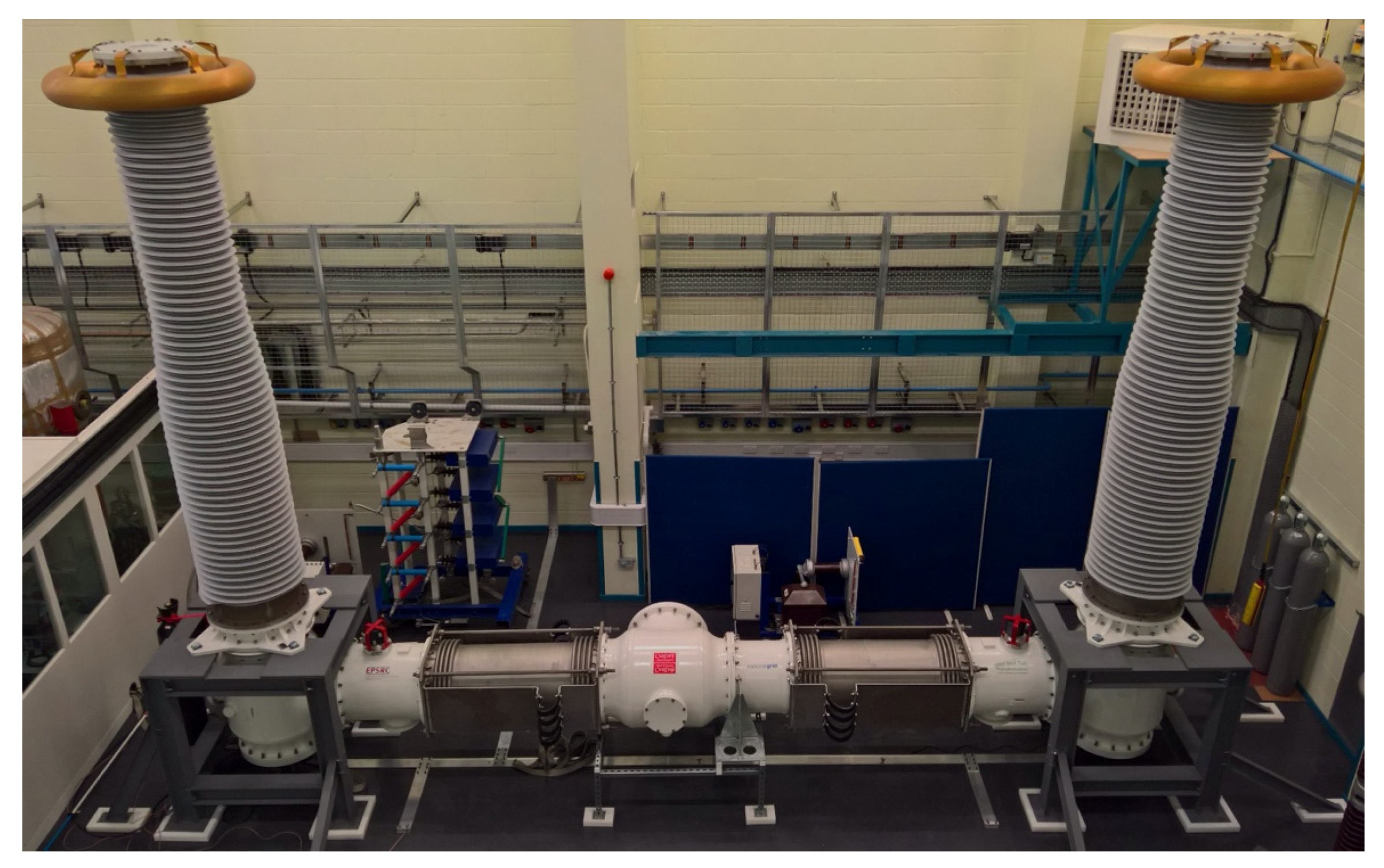
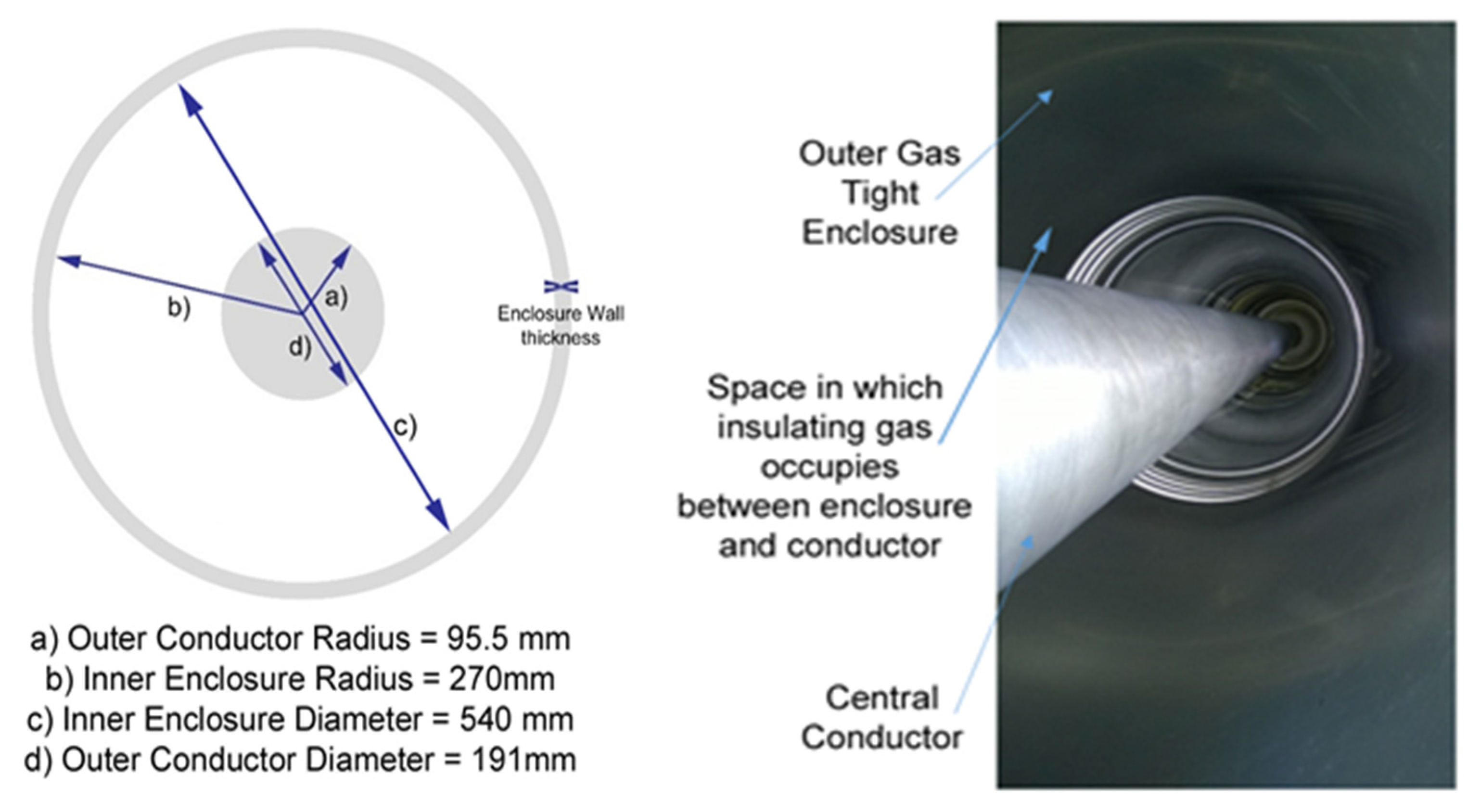
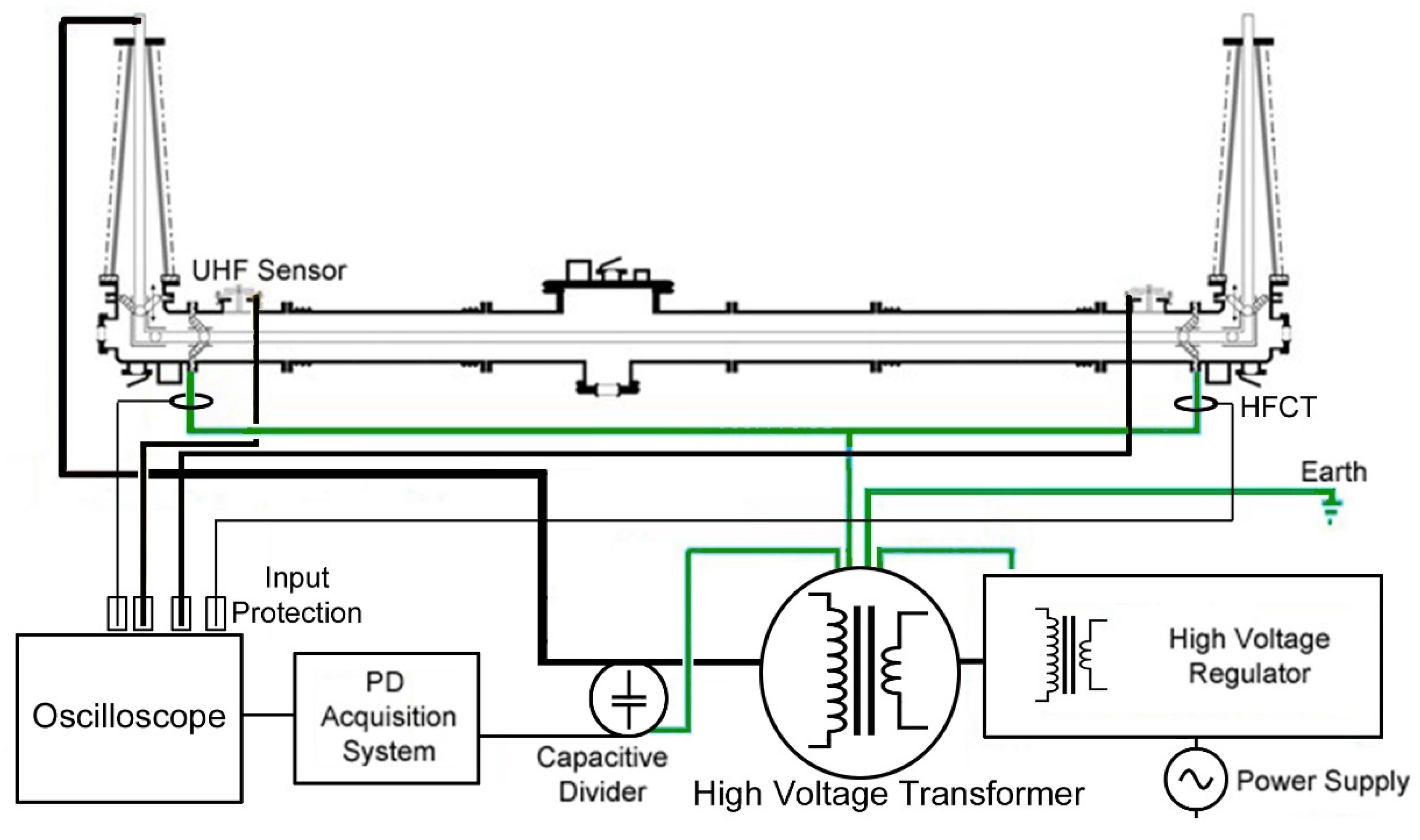
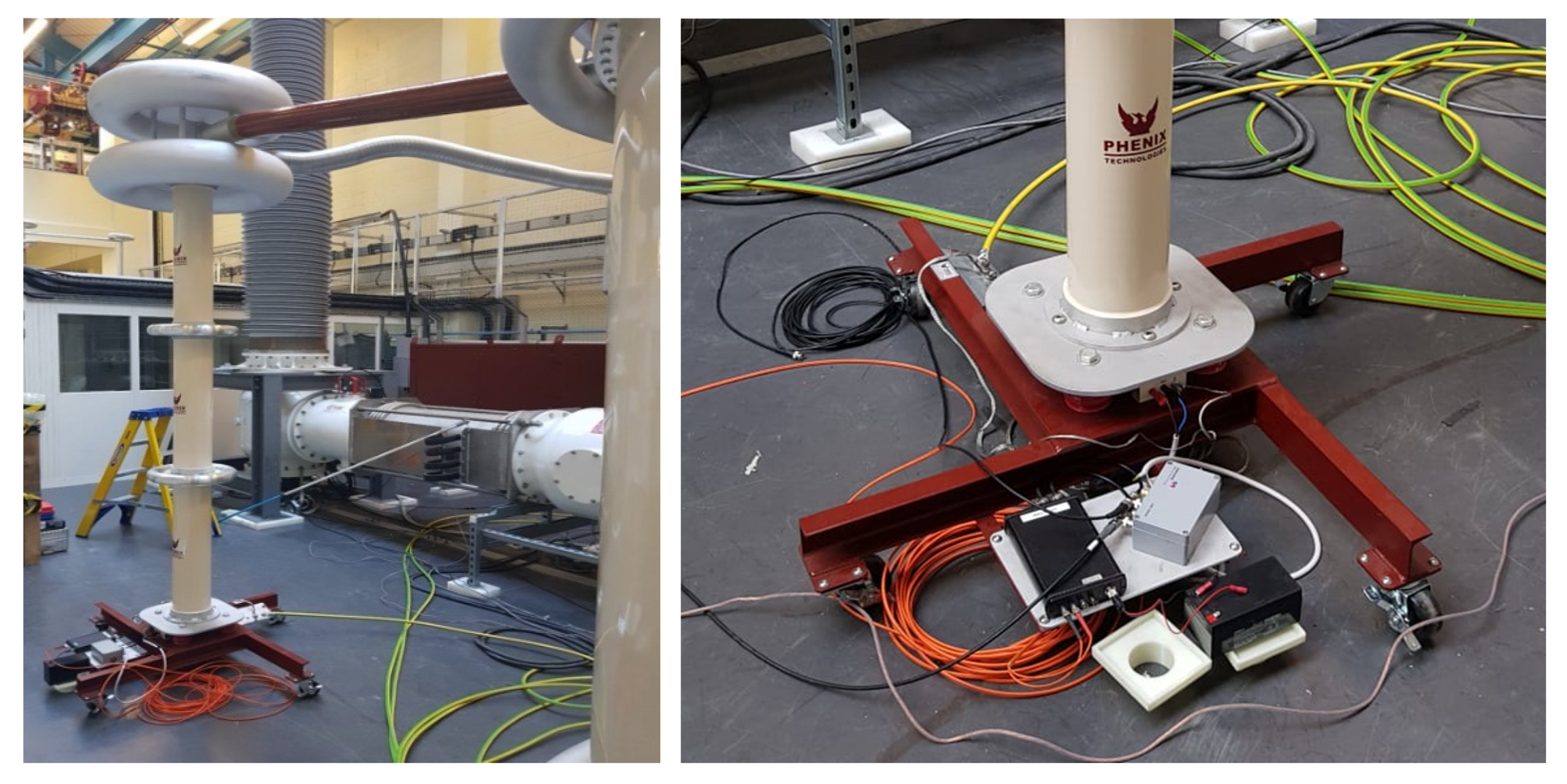
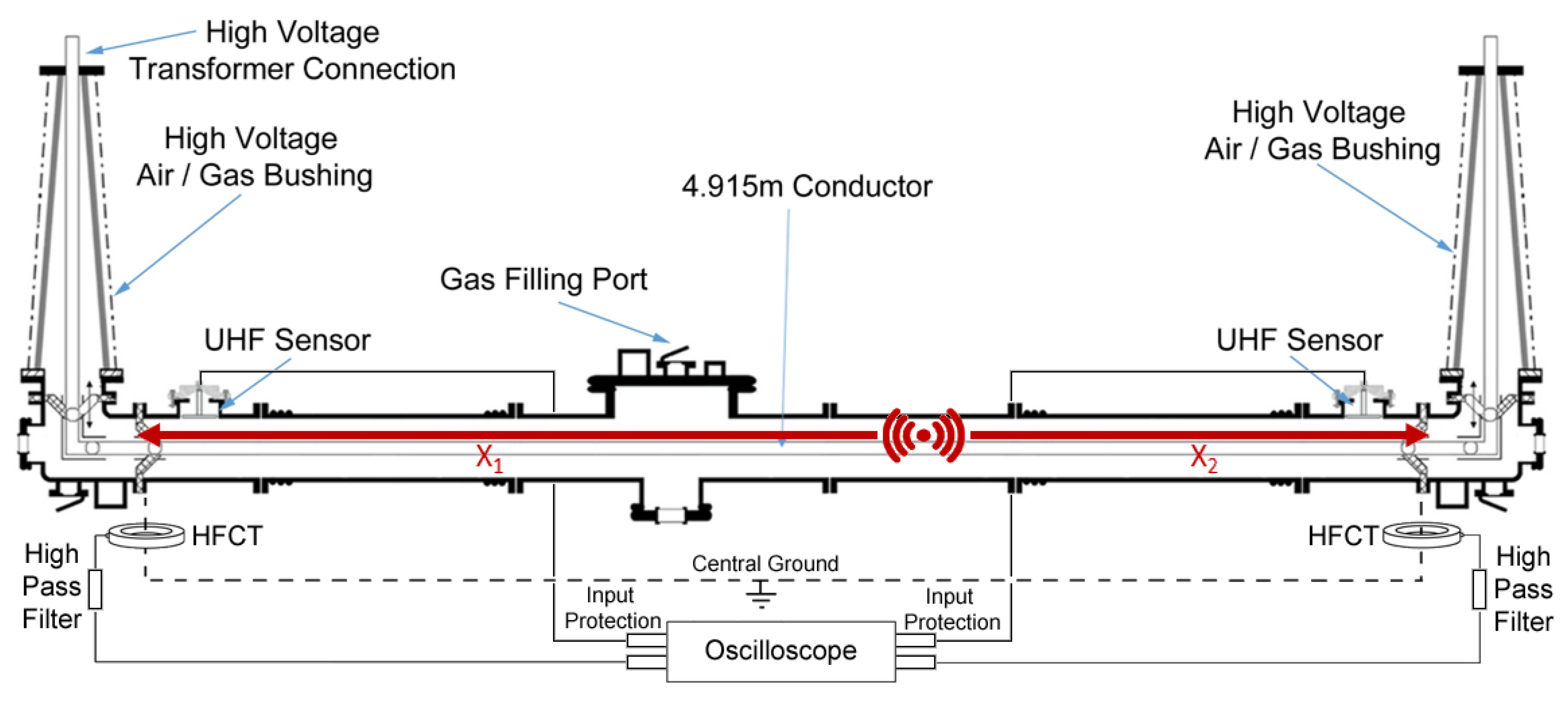


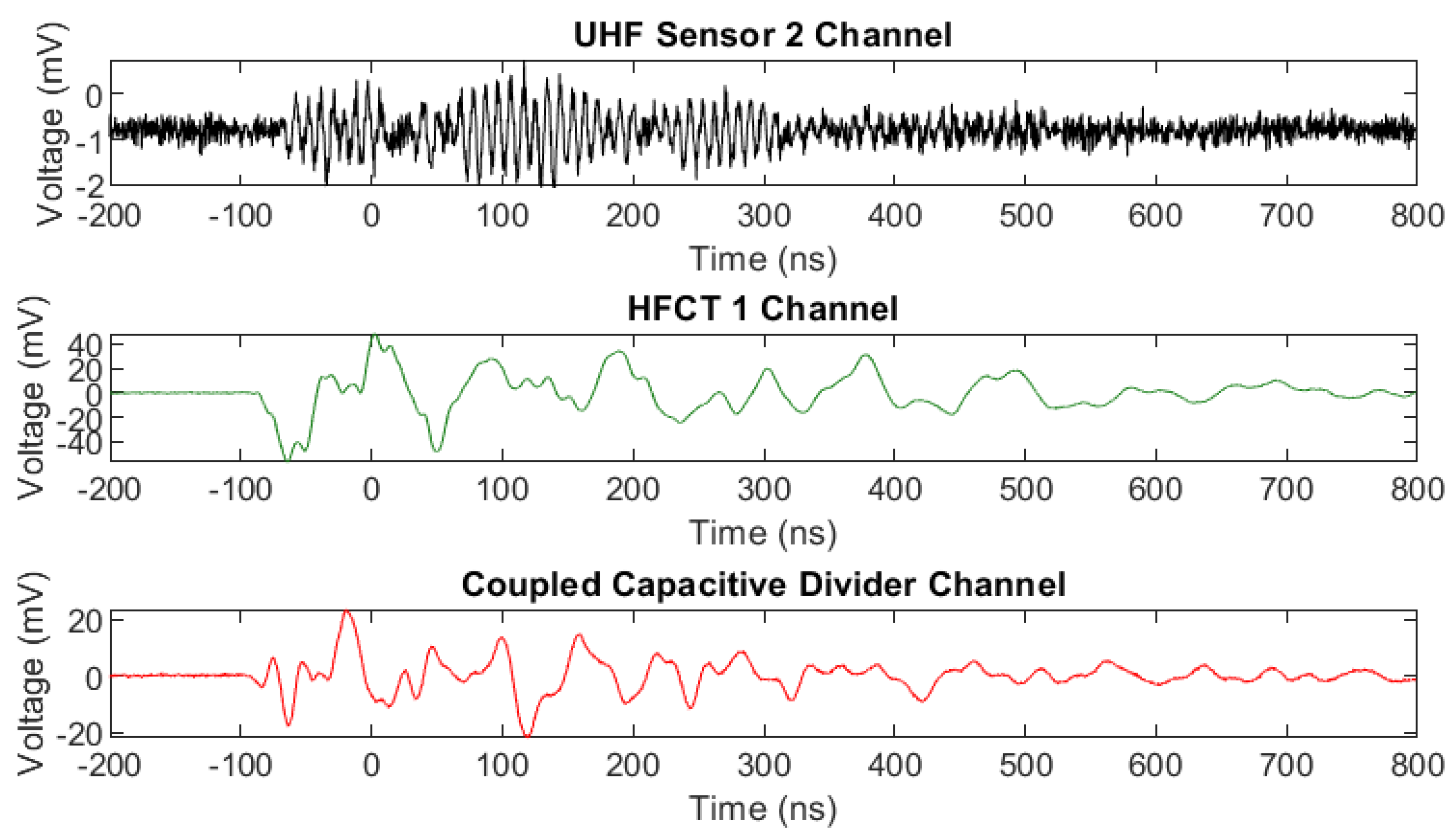
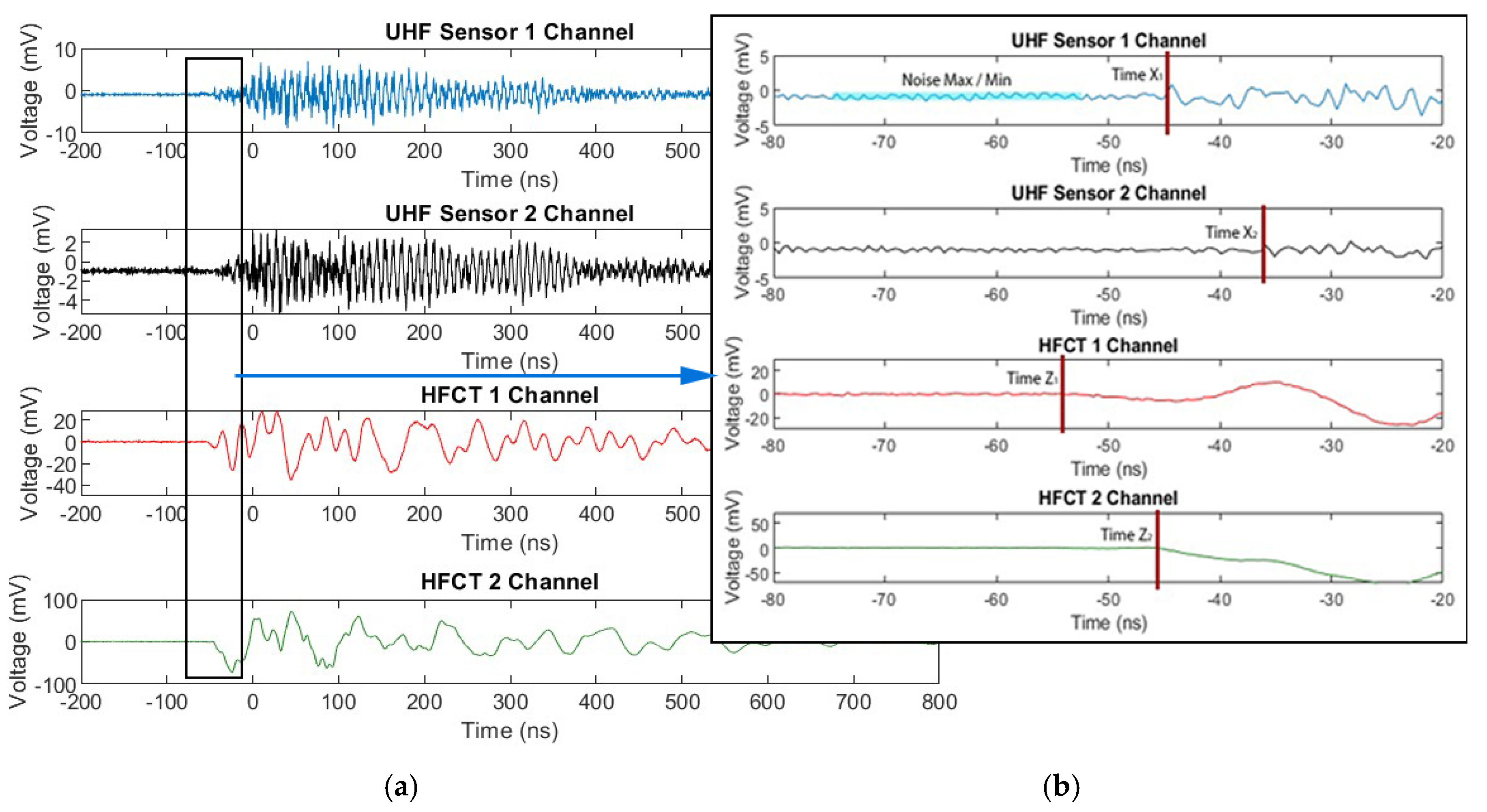
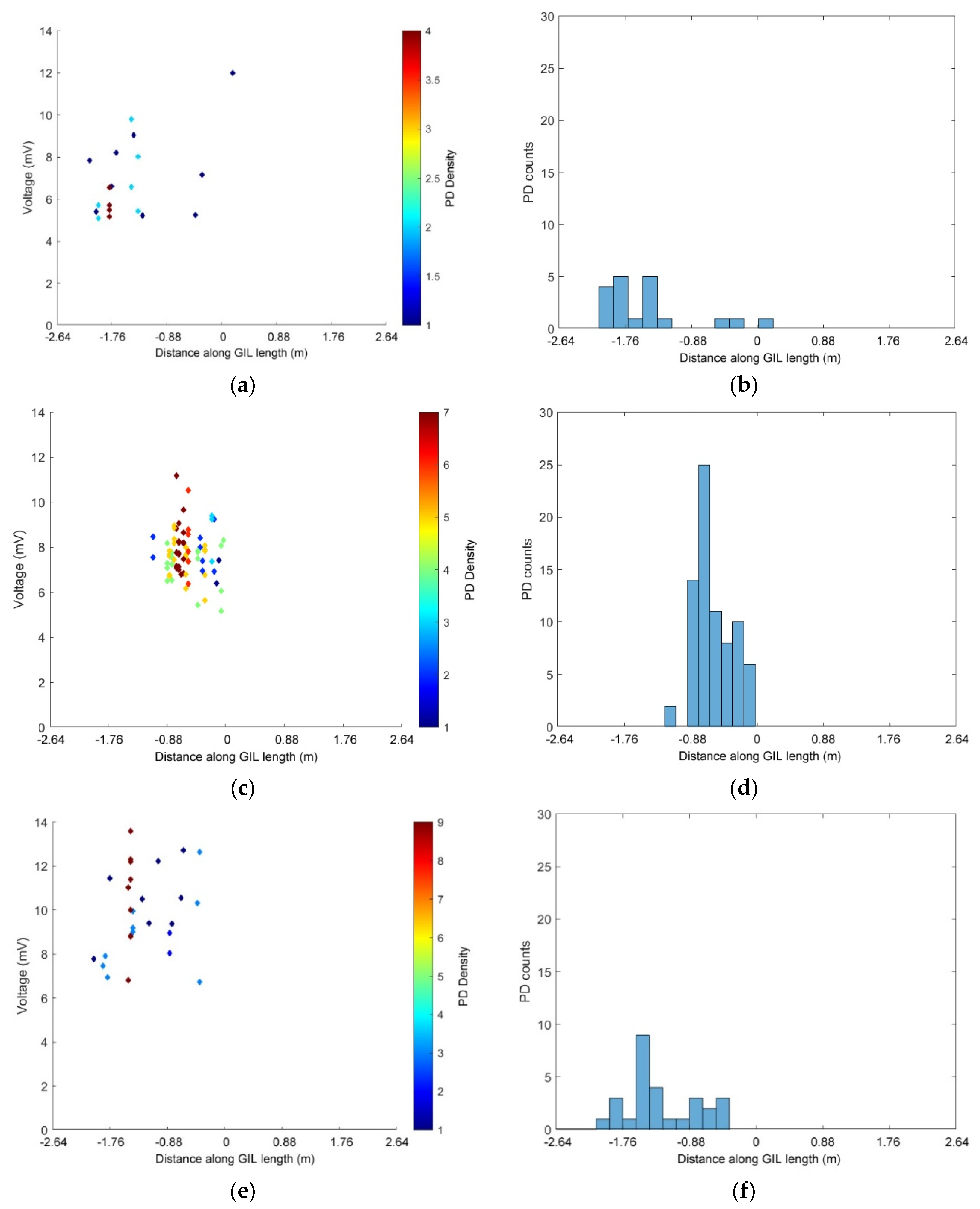
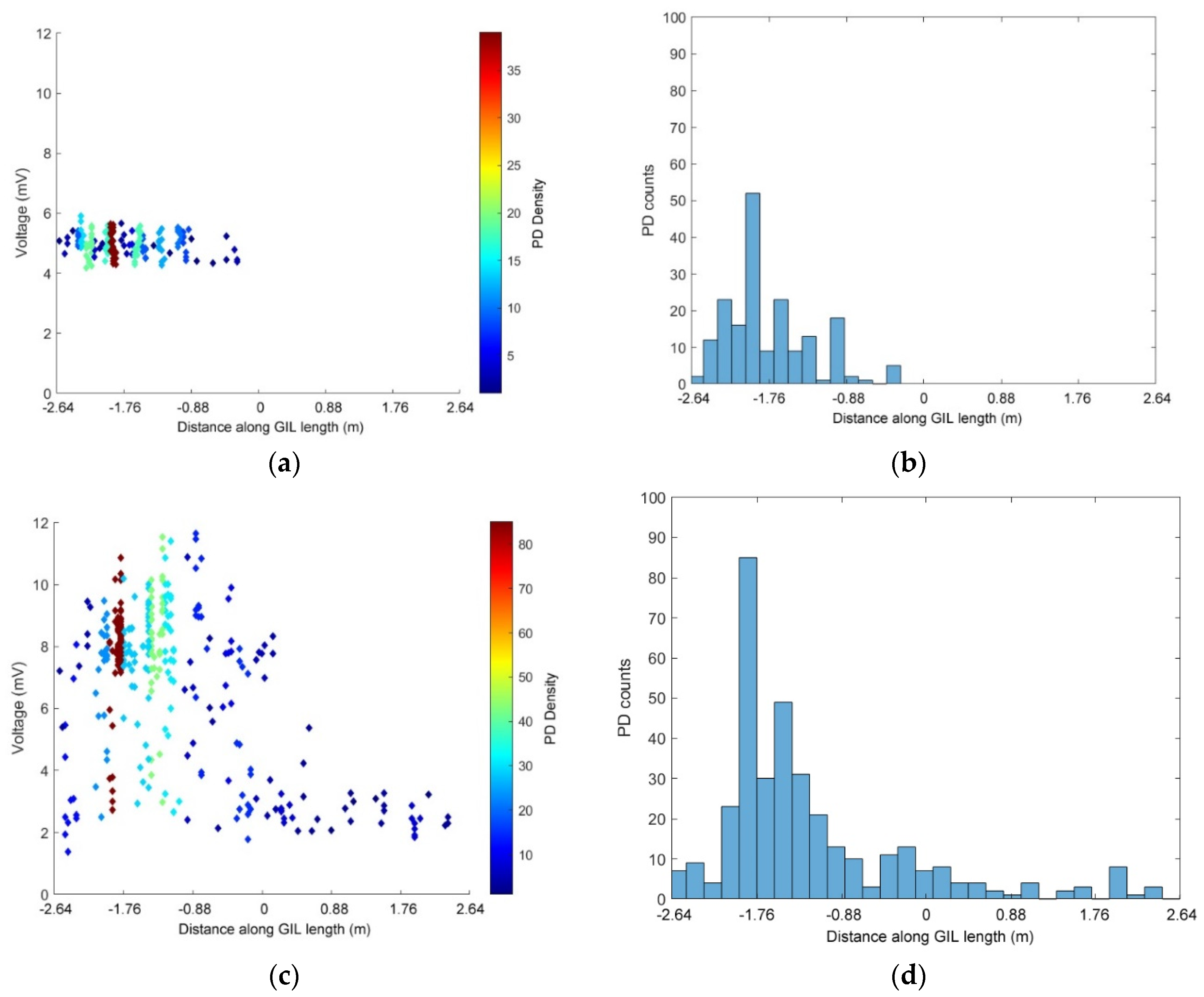
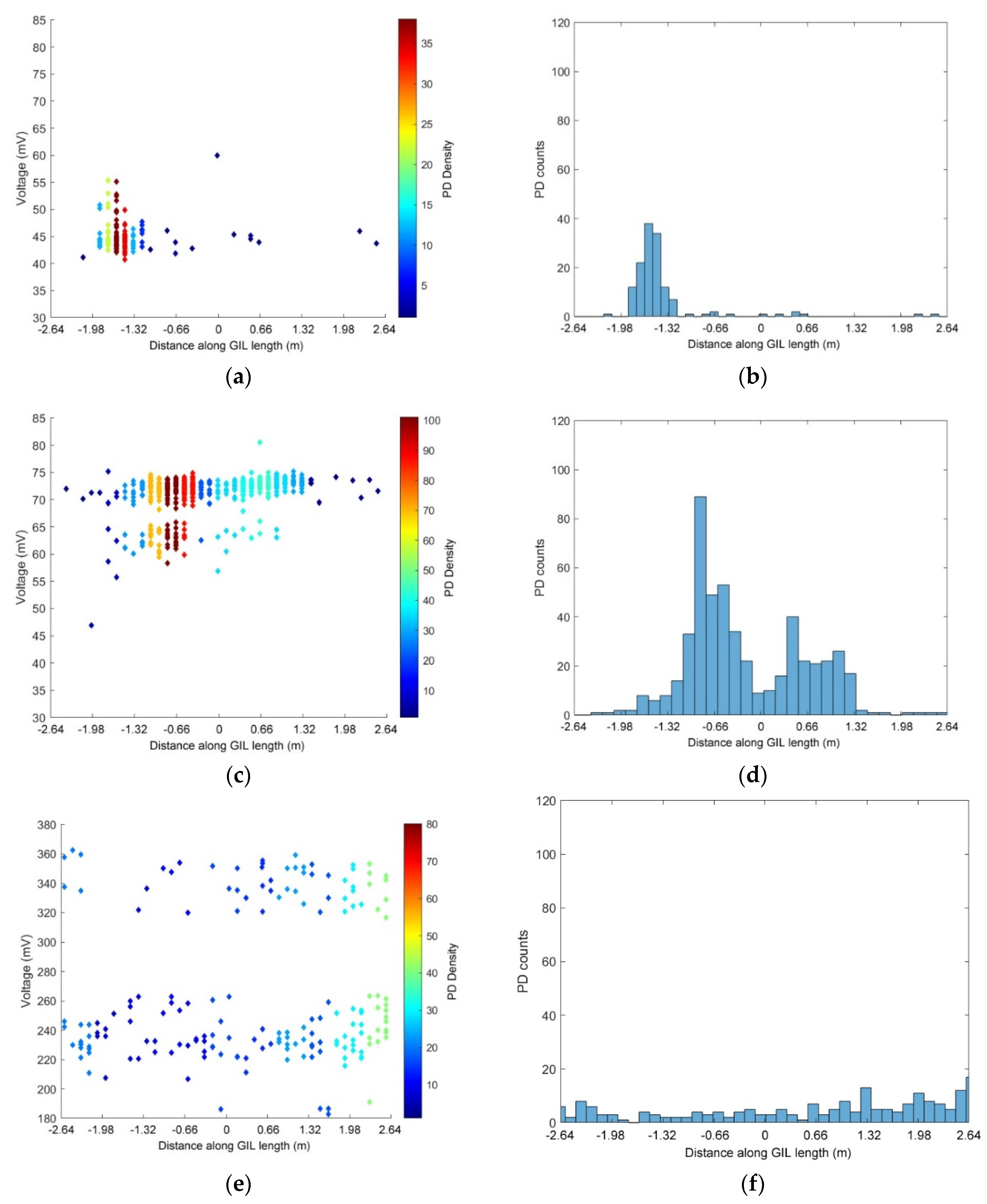

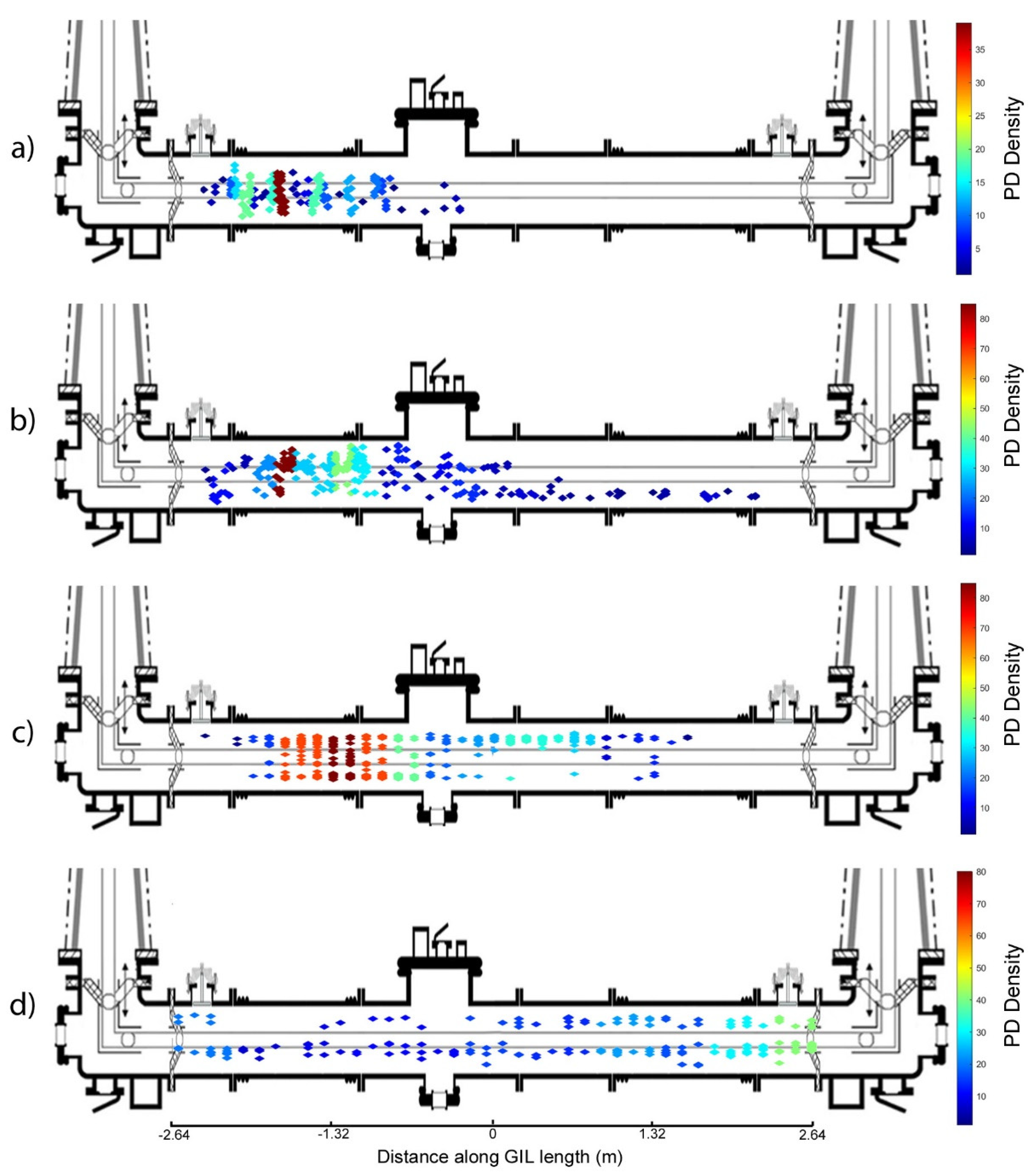
| Ur Gas Insulated Line Demonstrator Rated Voltage | Uph-ea Nominal System Phase to Earth Voltage | Upd-test Test Voltage for PD Measurement Uph-test (>1 min) |
|---|---|---|
| 300 kV | 173 kV | 208 kV |
| 362 kV | 209 kV | 251 kV |
| 400 kV | 231 kV | 277 kV |
| 420 kV | 242 kV 1 | 291 kV |
| 3 bar | 4 bar | 5 bar | |
|---|---|---|---|
| Pure Carbon Dioxide (CO2) | >242 kV | >242 kV | >242 kV |
| Pure Nitrogen (N2) | >192 kV | Breakdown (BD) at 211 kV and 241 kV | >242 kV |
| Technical Air | >242 kV | >242 kV | >242 kV |
© 2020 by the authors. Licensee MDPI, Basel, Switzerland. This article is an open access article distributed under the terms and conditions of the Creative Commons Attribution (CC BY) license (http://creativecommons.org/licenses/by/4.0/).
Share and Cite
Widger, P.; Carr, D.; Hills, M.; Reid, A. A Comparison of Partial Discharge Sensors for Natural Gas Insulated High Voltage Equipment. Sensors 2020, 20, 4443. https://doi.org/10.3390/s20164443
Widger P, Carr D, Hills M, Reid A. A Comparison of Partial Discharge Sensors for Natural Gas Insulated High Voltage Equipment. Sensors. 2020; 20(16):4443. https://doi.org/10.3390/s20164443
Chicago/Turabian StyleWidger, Phillip, Daniel Carr, Meirion Hills, and Alistair Reid. 2020. "A Comparison of Partial Discharge Sensors for Natural Gas Insulated High Voltage Equipment" Sensors 20, no. 16: 4443. https://doi.org/10.3390/s20164443
APA StyleWidger, P., Carr, D., Hills, M., & Reid, A. (2020). A Comparison of Partial Discharge Sensors for Natural Gas Insulated High Voltage Equipment. Sensors, 20(16), 4443. https://doi.org/10.3390/s20164443




